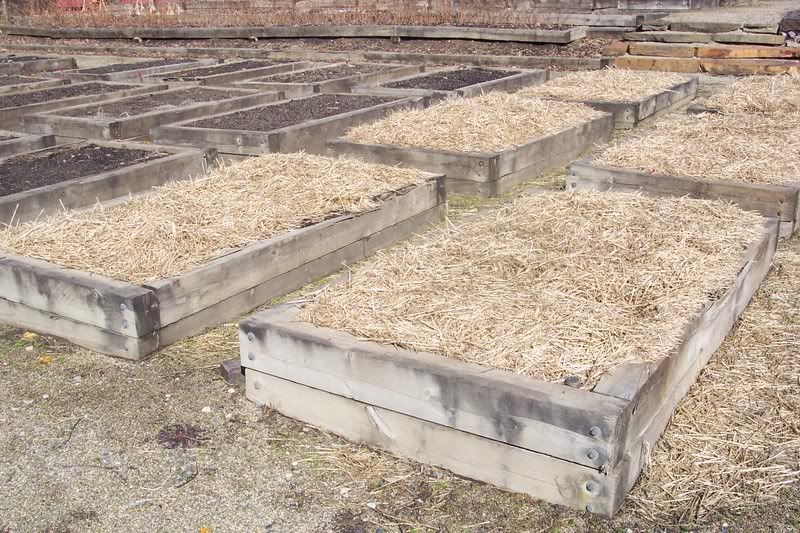Did you get a chance to go outside today? I did.
The snow was melting rapidly this morning as the temperature began to rise up to 70 degrees. It was a great opportunity to check out how things fared over the winter.
My first stop was the bee hives. All 8 hives had made it through the winter. I always expect one or two of the colonies to not survive the winter, so this was a pleasant discovery. The bees were joyfully taking their first spring flight in the 70 degree air and basking in the sun on the side of the hive boxes.
My next stop was the vegetable garden, as regular readers of this blog know, we have around 125 raised beds. Most of the beds were still frozen, some had snow-melt water on the surface because the soil had not completely thawed.
One bed, much to my delight, still had growing spinach! Every spinach plant in that bed was alive and making new growth. What makes this all the more surprising is the fact that this bed was not mulched or covered in any way! Of course I just had to taste some, so I picked a few leaves… they were delicious…and super-sweet. I mean almost sugary! Apparently, the spinach plants, as a winter survival tactic, had increased the amount of sugars and other nutrients in their leaves and crowns. This kept the individual plant cells from forming ice crystals and bursting their cell walls. These will make the most nutricious salad of the season.
Last fall we had covered 4 beds with home-made plastic “mini-greenhouses”. These, of course, were the warmest of the garden beds. I stuck my soil thermometer in several spots to depth of 5 or 6 inches and found that the soil temperatures ranged from a high of 44 degrees F near the center of the bed to a low of 32 degrees at the corners. Actually, the corners were still frozen at a depth of 3 or 4 inches.
Hey, 44 degrees is good enough for me! :) I cleared out a few frozen bib lettuce plants leftover from last fall, raked the surface level and sowed new lettuce seeds. Lettuce is a cool weather plant and is able to germinate fairly well when soil temperatures are in the 40′s. Since this particular bed will be protected by the bed cover, the planting will have a good chance of producing a successfull early lettuce crop. If not, I’m only out the cost of a few seeds.
The seed I used was a mixture called “All Star Gourmet” from Johnny’s Selected Seeds. This mix contains 4 different green leaf lettuce varieties and 4 red leaf.
If all goes according to plan we will be harvesting our first outdoor lettuce in a few weeks.
And so, another season begins…
Bob

